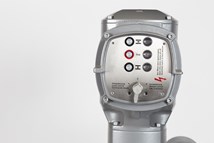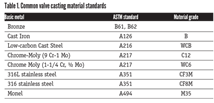Flex the Power of Generational Differences
A report from the VMA Market Outlook Workshop, held in August 2012:
“Attracting, retaining and motivating talent is difficult, especially when you’re recruiting those who can really add value to your business”, said Steve Jacobs, Senior Manager at Ernst & Young, as he began his presentation entitled “Managing Workforce Generational Differences”.
#VMAnews
Jacobs reminded attendees that recruitment is not just about getting somebody into a job. You need someone who can be engaged and motivated. Those that are classified as “Generation Y” are motivated and engaged by different things than those of us who are known as “baby boomers”, and it can be difficult at times to understand those differences, especially when the person doing the hiring is a boomer.
For many older workers, the rewards of employment were financial and the expectation was that a career was more or less a lifetime commitment. For Generation Y, however, it’s not all about the financial rewards. An employer needs to understand what really motivates that person. Is it recognition? Is it a contribution to society, or being green? According to Jacobs, an important aspect of hiring is to be sure the company itself has created a compelling employee value proposition.
What is your company about? What does it stand for? Is it green and social? How do you represent yourself as a company? Is it a leader in your industry?
“People come and stay in large part due to what kind of company you are,” said Jacobs. “Do you have great leaders? Who are they, and what do they represent. Do they act like leaders? Do they espouse the culture and values of the organization?” People don’t come and go just for money. The sum total of rewards is important, but there is a difference in generations. It is intrinsic and extrinsic, not just about the financial aspects of rewards but also the non-financial. For Generation Y, they could be much more concerned about recognition, career development, degree of challenge. According to Jacobs, then, it’s important that you can articulate the employee value proposition for your company.
One of the big problems for manufacturers today is what is considered a shortage of skilled workers. It is expensive to recruit and hold onto qualified people, so, according to Jacobs, it is essential to develop the employee value proposition to cut those costs.
It’s also important to understand how the workforce is morphing. Today, Generation Ys and Baby Boomers represent 75% of the labor force. But by 2025, Generation Y alone will comprise 75% of the workforce. Baby Boomers traditionally feel that is is not good to change jobs a lot, whereas Generation Y workers change jobs frequently. Boomers often feel that many changes reflect instability, but that is not necessarily the case. The diversity of experiences and exposures that Generation Y workers can bring back to a company can affect everything from leadership qualities to the ability to think up innovative solutions to problems.
The best way to deal with the differences, and incorporate them into value for the company is to take the best of both worlds. “As much as we think there are differences or animosity,” said Jacobs, “they do want to seek out the other generations. Use that desire to pull them together and make the company stronger.”
Kate Kunkel is Senior Editor of Valve Magazine. Contact her at kkunkel@vma.org
RELATED CONTENT
-
The Final Control Element: Controlling Energy Transformation
When selecting control valves, be sure to properly evaluate the process conditions to identify potential issues and select the proper management techniques.
-
Misconceptions Regarding Control and Isolation Valve Standards
All on/off isolation valve standards are not created equal and cannot be applied unilaterally to all valves.
-
Creating a Standard for Severe Service Valves
Severe service valves are offered in several standard designs, including non-return, isolation and control types.







 Unloading large gate valve.jpg;maxWidth=214)